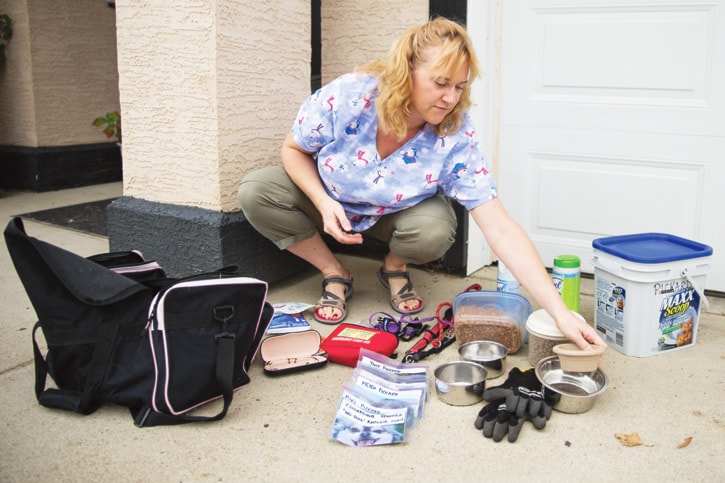Human life may be top priority, but pets and livestock are a close second.
That is why members of the Canadian Disaster Animal Response Team (CDART) steps it up on request.
CDART is a specially trained group of volunteers which deals with animals during human or natural disasters, working hand in hand with Shuswap Emergency Program (SEP)’s Emergency Support Services.
“We’re crossed trained so we can be aware of what ESS does and then when we’re not busy, we give them a hand,” says Bev Pickard, commander of the local team.
Courses are provided to volunteers through the Justice Institute of B.C. and while they haven’t yet been called out, members of the team were able to observe how the Kelowna team worked during the Smith Creek fires last summer.
“We have a team of about 10 volunteers here and we definitely need more,” says Pickard. “We need people that are comfortable around a animals but also need people who have livestock and are willing to take in evacuated livestock in the case of an event.”
Pickard would like to draw up a resource list of who would be willing to take livestock and pets in case of a disaster and how many they could accommodate in Area C South Shuswap, D Falkland/Salmon Valley/Ranchero, Area F North Shuswap and Area E Rural Sicamous.
“We also need foster homes and, again, they have to be approved and registered beforehand. We don’t want to be doing that in the heat of a disaster.”
The local CDART group is also looking for people who like to do paperwork, as so much of the work involves managing forms, tracking people, tracking animals and re-uniting people with their pets or livestock.
Pickard says pet owners should always have a grab-and-go bag prepared for their pets, including medication, food, an extra leash, a photo of the pet, especially if the pet is a purebred, basic info about the pet, toys and blankets.
“It’s the same idea as people grab and go bags, you want to be sure you can be prepared for 72 hours, especially with medication,” she stresses.
People who are interested in putting together a grab-and-go bag for their pet will find a packing list of suggested items at www.cdart.org/disasters.
People who are interested in getting involved with the local CDART group, may email Bev at bev.pickard@cdart.org.
The group meets once a month throughout the year and members are able to join Emergency Social Services as well.
Pickard says volunteers must take the first level of CDART training and is hoping to have enough volunteers to start the training in the new year.
“I get the satisfaction of knowing I am helping other people take care of their pets,” she says. “As a groomer, I know how important the bond is between pet and guardian, especially during a disaster.”
